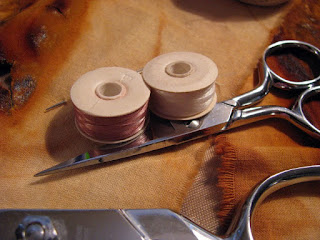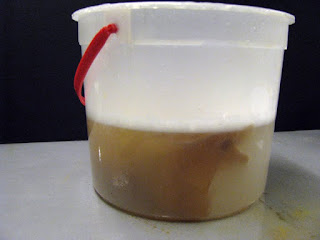Removing Excess Rust - Direct Method
Supplies Needed: Baking Soda, Old Tooth Brush, Spoon for mixing water and baking soda, sponge brush, optional, warm water, plate or bowl for holding baking soda paste.
Place onto your plate or bowl about 1/4 cup of baking soda, mixe warm water into the baking soda but just barely enough so that you have a thick paste, not too runny.
You don't want the past to be too runny as you want it to sit on top of the rusted areas and penetrate the rust, allowing it to sit on the surface will help to break down the thicker rust areas on the surface.
Apply the baking soda paste with a sponge brush or an old tooth brush.
Notice how thick the paste is on the surface, it is sitting on the surface.
Take your brush and work it into the surface of the fabric.
THEN flip your fabric over and repeat.
Apply a second layer of baking soda paste on the back side of the fabric, this is especially important on very thick areas of rust. Yes you will lose color on your fabric however that can be gained back later in an iron mordant bath if desired.
Now that you have the baking soda paste worked into the surface wet the surface slightly to ensure further removal of the rust, you don't want the fabric to be dripping wet, just slightly damp. If need be you can repeat this process as many times as necessary until you have acquired the desired level of rust necessary for sewing.
Wash, rinse,and dry fabric in the normal manner after removing excess rust, you may need to do this process more than once.




















































